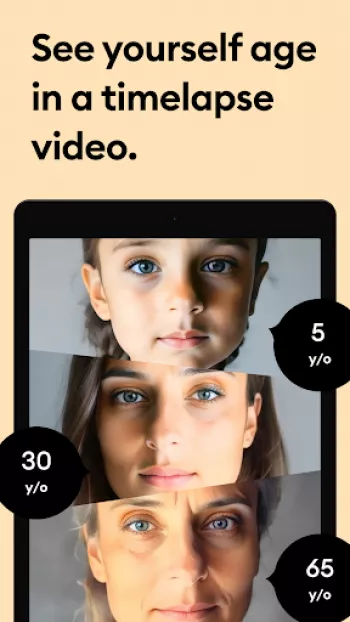Apps Home

The Revolutionary Power of AI in Enhancing Image and Video Quality
Artificial Intelligence has significantly transformed numerous aspects of technology and digital media, and one of the most impressive areas it has impacted is image and video quality enhancement. AI-driven applications like Remini have brought about revolutionary ways to unblur, restore, and improve old and deteriorated photos and videos, breathing new life into your treasured memories. Through intricate algorithms and machine learning techniques, AI can analyze and understand the content of a photo or video at a granular level, identifying areas that need enhancement. For instance, a pixelated family photo taken decades ago or a blurry video shot with an old camcorder can be meticulously improved to high-definition clarity. AI models used in such applications are trained on enormous datasets comprising millions of images to recognize patterns, predict missing details, and synthesize new information that blends seamlessly with the existing content. This process, called super-resolution, involves increasing the resolution of images or videos, thus enabling a clear, crisp, and impressive visual output. Moreover, advanced neural networks can perform image inpainting, meaning they can fill in missing or corrupted parts of an image with sensible assumptions, often surpassing human-level proficiency in discerning probable features and textures. This technology is not just about enhancing individual visuals but also about changing how we interact with and appreciate digital media in a world increasingly dominated by visual content. The ability to revive old memories in stunning clarity can have a profound emotional impact, allowing us to connect with the past in new and deeply personal ways.
Understanding the Technical Aspects of Image and Video Enhancement
Image and video enhancement goes beyond basic photo editing techniques—it delves into complex computational processes that adjust, correct, and improve media quality at a foundational level. At the heart of these processes is the concept of resolution, which refers to the detail an image or video holds—the higher the resolution, the more detail. Enhancement applications like Remini harness the power of convolutional neural networks (CNNs), a class of deep neural networks most commonly applied to analyzing visual imagery. CNNs are composed of layers that automatically and adaptively learn spatial hierarchies of features through backpropagation by utilizing multiple building blocks, such as convolution layers, pooling layers, and fully connected layers. They work by sliding a filter or kernel over the input data, performing convolutions, and generating feature maps that represent the data's essential features, such as edges, textures, and patterns. Moreover, GANs, or Generative Adversarial Networks, play a crucial role in enhancement by learning to generate new data from the observed input, which means that they can create sharper and more detailed images by predicting what more pixels might have looked like in the original high-resolution image. This prediction is made systematically through adversarial training, where two networks, the generator and the discriminator, are pitted against each other to improve the output quality iteratively. The result is an enhanced image or video that seems almost magically transformed from its original, unrefined state, richly detailed and pleasing to the eye.
Applications and Practical Uses of Enhanced Photo and Video Technologies
The ability to enhance photos and videos has broad implications and practical utility across various fields and industries. For individual users, applications like Remini provide the perfect tool for personal archiving and reminiscing, especially for families wanting to restore old photo albums or enhance home videos. These enhanced images and videos can be cherished anew, shared with family across generations, and preserved digitally for the future. Beyond personal uses, industries such as media and entertainment also significantly benefit. Film production companies often need to add new life to footage from older movies, requiring sophisticated enhancement to bring them up to modern viewing standards. In the medical field, enhanced imaging can improve diagnostics and research, allowing for clearer insights into complex structures in medical imagery such as MRIs and CT scans. Security and surveillance utilize these technologies to increase the clarity of footage captured by CCTV cameras, allowing for better recognition and analysis of events. Additionally, creative professionals like photographers and video editors can significantly elevate their work quality by producing stunning visuals that captivate and engage. Such technology truly exemplifies the multifaceted applications and capabilities of artificial intelligence, not only serving utilitarian purposes but also opening new creative avenues.
Challenges and Ethical Considerations in Image and Video Enhancement
Despite the undeniable benefits of AI-driven image and video enhancement, there are challenges and ethical considerations that must be addressed. One primary challenge is the potential for over-reliance on AI technology, risking situations where users might trust the output without verification, leading to the dissemination of manipulated or false images. This is especially concerning in fields like journalism, where image integrity is vital. Ethical concerns also arise around privacy, as enhanced images may inadvertently reveal more detail than intended, potentially infringing on personal privacy or security rights. Furthermore, AI-enhanced photos may create unrealistic standards of beauty or accuracy, erasing natural features in a quest for perfection, which can have adverse effects on individuals' self-perception. Another potential issue is the misuse of technology in creating deepfakes, videos that convincingly map one person's face onto another's, potentially used for malicious activities. Addressing these concerns requires a delicate balancing act between harnessing technology's capabilities and ensuring its responsible use. Developers and users alike need to engage in transparent dialogue, creating guidelines and regulations to safeguard authenticity and promote ethical standards. Ultimately, it will be pertinent for developers to incorporate authentication tools and educate users on the capabilities and limits of these advancements to prevent misuse and maintain trust in digital media.
Access and Advancement: Download and Future Developments
With the proliferation of smartphones and personal computing devices, applications that enhance photo and video quality are more accessible than ever. Platforms like Android, iPhone, Windows, Linux, and Mac facilitate widespread dissemination of such technology, allowing users to easily improve their digital media with just a few taps. Through the Download for Android link, Android users can readily access tools like Remini, while iPhone users can explore options via Download for iPhone. Similarly, these applications extend to computing platforms with availability for Download for Windows, Download for Linux, and Download for Mac. As technology advances, these applications are expected to incorporate more sophisticated AI models, providing even finer control over image quality parameters, and real-time enhancements in video processing. Future developments might see enhanced integration with other digital technologies such as augmented reality (AR) and virtual reality (VR), offering users immersive experiences by turning enhanced media into interactive 3D models. Continued strides in AI could also unlock new opportunities for personalized user experiences, where AI tailors enhancements based on individual user preferences and contexts. The ongoing evolution of these applications holds immense potential for revolutionizing how we perceive and interact with our digital memories, pushing the boundaries of what is possible in photo and video technology.
Share Your Opinion
Your Email Will Not Be Published.
All Rights Reserved © Apps Home 2025
















































Bilal Mohsin
I've got to say, the Remini app is a total game-changer! It's an AI-powered photo editing tool that can take your low-quality photos and turn them ...
Maria
Actually a very good AI app for lots of fun with your pics and videos. I don't tend to use AI generated pictures besides just fun but I did end up ...
HoneyDew *
I have a few baby pictures now, thanks to AI. Also ok at fixing some photo issues. I gave 4stars for two reasons: 1: I came for couple photos, whic...
Wade Butler
I really like this app and hope they add new models. My only issue is that resetting the profile to try new new pictures usually doesn't work unles...
Giuliana DAgostino
This app is great but the gender swap ai photo generator doesn't work and it keeps loading to where it comes up with an error message and your unab...